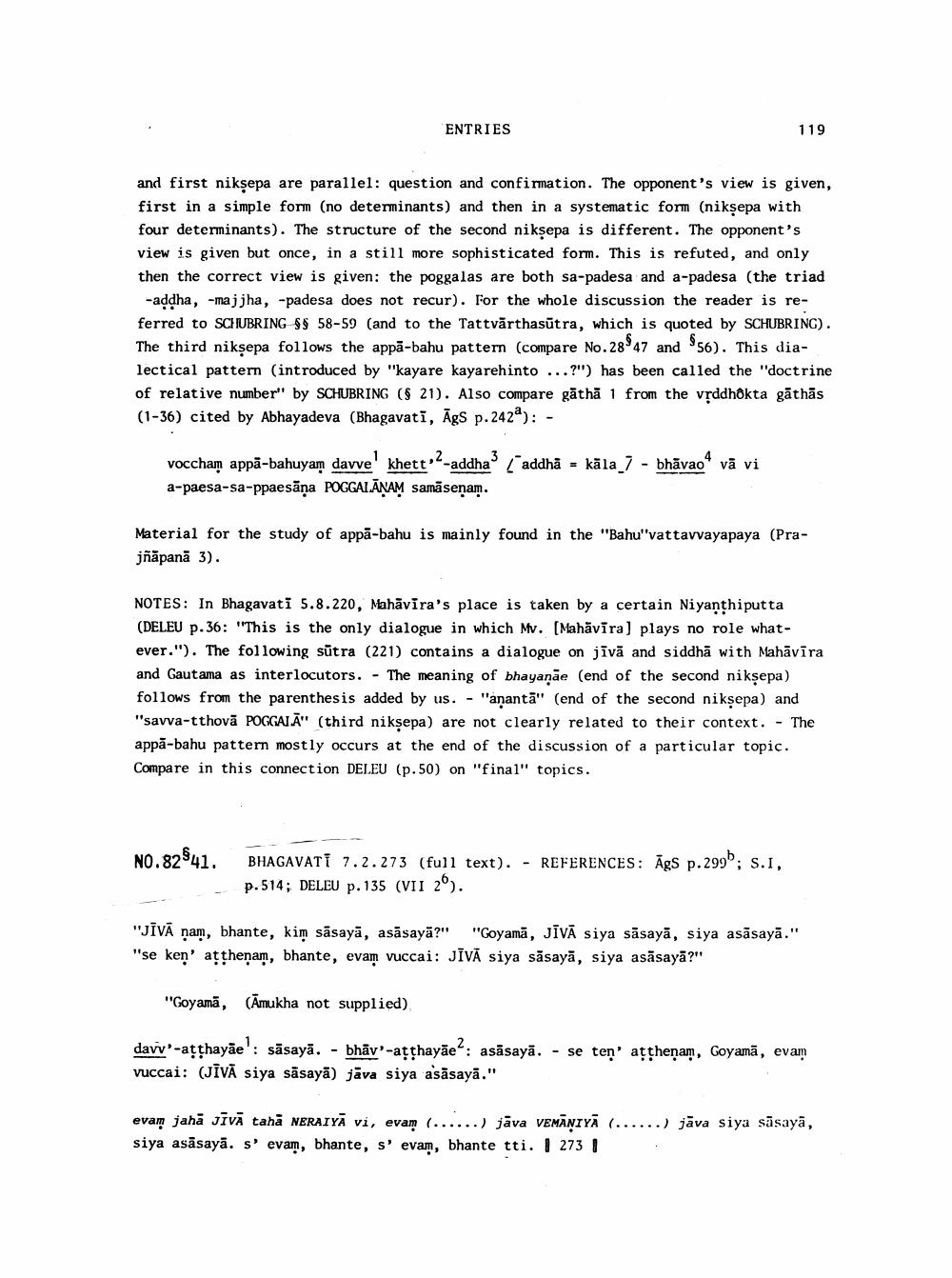________________
ENTRIES
119
and first niksepa are parallel: question and confirmation. The opponent's view is given, first in a simple form (no determinants) and then in a systematic form (niksepa with four determinants). The structure of the second nikṣepa is different. The opponent's view is given but once, in a still more sophisticated form. This is refuted, and only then the correct view is given: the poggalas are both sa-padesa and a-padesa (the triad
-addha, -majjha, -padesa does not recur). For the whole discussion the reader is referred to SCHUBRING $S 58-59 (and to the Tattvārthasūtra, which is quoted by SCHUBRING). The third niksepa follows the appā-bahu pattern (compare No.28 47 and 56). This dialectical pattern (introduced by "kayare kayarehinto ...?") has been called the "doctrine of relative number" by SCHUBRING ($ 21). Also compare găthā 1 from the vşddhôkta gāthās (1-36) cited by Abhayadeva (Bhagavatī, Āgs p.242"): -
voccham appā-bahuyam davve' khett2-addha'addhā – kāla_7 - bhāvao vā vi a-paesa-sa-ppaesāņa POGGALĀNAM sanāseņam.
Material for the study of appā-bahu is mainly found in the "Bahu"vattavvayapaya (Prajñāpanā 3).
NOTES: In Bhagavati 5.8.220, Mahāvīra's place is taken by a certain Niyanthiputta (DELEU p.36: "This is the only dialogue in which Mv. (Mahāvīra) plays no role whatever."). The following sūtra (221) contains a dialogue on jīvā and siddhā with Mahāvīra and Gautama as interlocutors. - The meaning of bhayanae (end of the second nikşepa) follows from the parenthesis added by us. - "anantā" (end of the second niksepa) and "savva-tthovā POGGALĀ" (third nikṣepa) are not clearly related to their context. - The appā-bahu pattern mostly occurs at the end of the discussion of a particular topic. Compare in this connection DELEU (p.50) on "final" topics.
NO.82841.
-
BHAGAVATT 7.2.273 (full text). - REFERENCES: Āgs p.299"; S.I, p.514; DELEU p. 135 (VII 20).
"JĪVĀ ņam, bhante, kim sāsayā, asāsayā?" "Goyama, JĪVĀ siya sāsayā, siya asāsayā." "se ken atthenam, bhante, evam vuccai: JĪVĀ siya sāsayā, siya asāsaya?"
"Goyama, (Āmukha not supplied)
davv'-atthayāe': sāsayā. - bhāv'-aţthayāe : asāsayā. - se ten' aţthenam, Goyamā, evam vuccai: (JĪVĀ siya sāsayā) jāva siya asāsaya."
evam jaha Jiva taha NERAIYA vi, evan (......) jāva VEMANIYA (......) jāva siya sāsayā, siya asāsayā. s'evam, bhante, s'evam, bhante tti. I 2731




